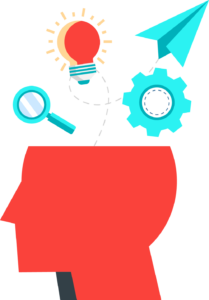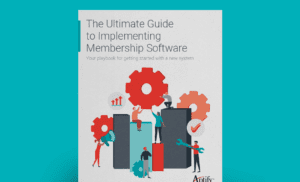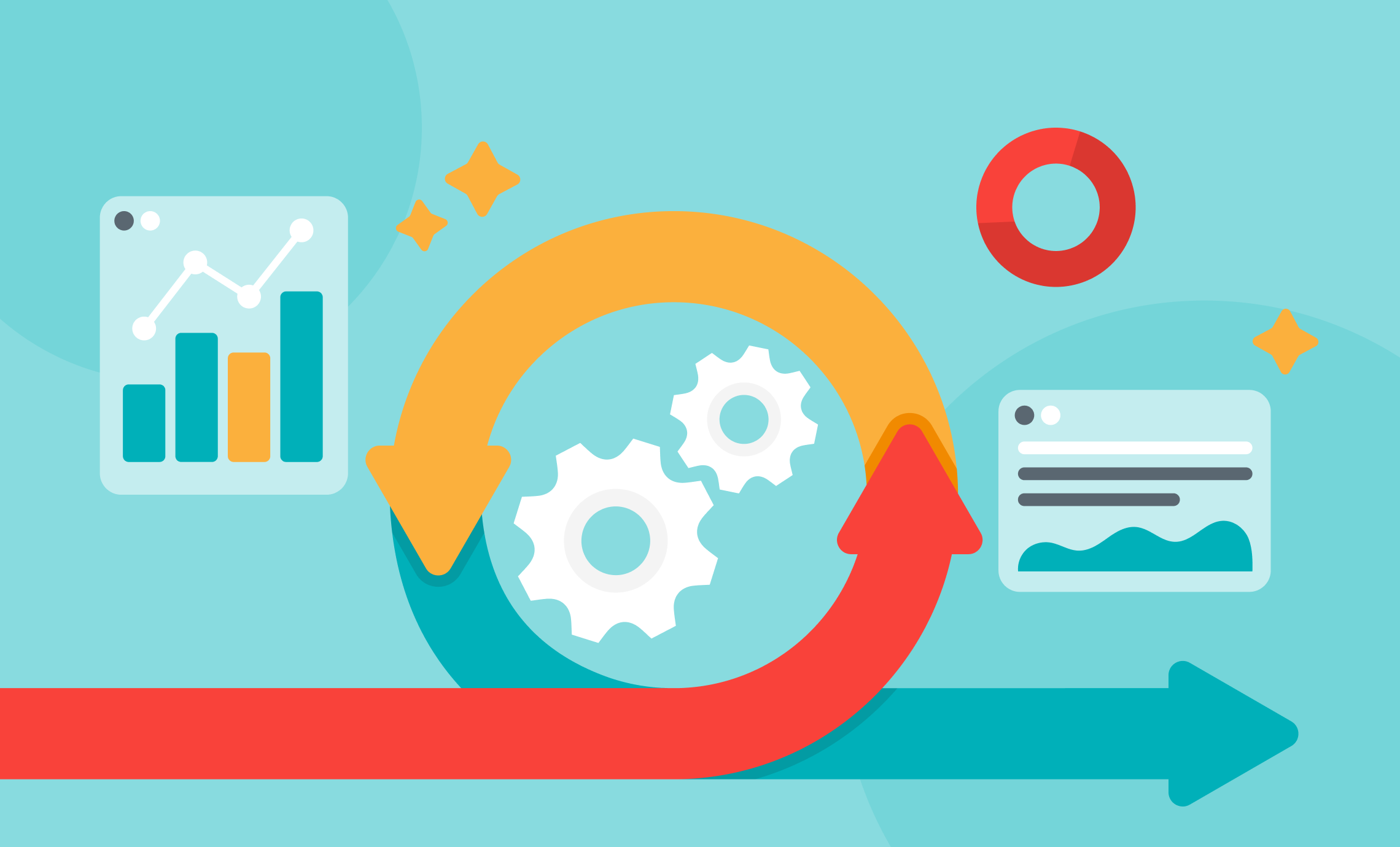Is implementing new software in your future? Learn what to expect when implementing new membership management software.
Selection is over and your decision is made. Is it time for a breather? No, not yet.
Here are some tips to make sure your organization is prepared for the four biggest challenges in the software migration process.
 1. Identifying Your Data Points
1. Identifying Your Data Points
You might hear the term “data points” used by your software vendor and/or implementation consultant. A data point is a single type of data —a typical member record has perhaps dozens of data points like id number, first name, last name, company, etc. During a software migration—moving (or migrating) data from your old membership database to the new system—you must decide which data you’re taking with you and ensure it has a place to “reside” in your new system.
Think of the data migration process like a cross-country move. You wouldn’t hire a moving company to ship belongings that are broken, no longer fit, or no longer used. You start the decluttering (or data cleansing) process well before you even know where you’ll end up living (before system selection). It takes a long time to go through belongings (data) and decide what to fix, keep, donate, or trash.
Before talking with prospective vendors, you need to understand how much data you want to migrate to the new system, where it’s coming from, and what state it’s in. The complexity—and, therefore, the duration and cost—of a data migration project is determined by the amount of data you have, the number of data sources, and the cleanliness of your data.
The more data you have, the more time it will take for you and your colleagues to review it, decide whether it stays or goes, and get it cleaned up for migration. And, the more time it will take your software vendor and/or implementation partner to map that data to the new system (know where it’s ending up), convert it, and test it once it’s in there.
The data conversion process is a time of difficult decisions: which data do you migrate to the new system and which data do you leave behind in archive files? Just like that outfit you bought several years ago that you’ve never had the occasion to wear, it’s hard to say good-bye to old data. Won’t you have a reason to use it some day?
Here’s the thing: the older the data, the more likely it’s no longer accurate. Set some rules about historical data and stick with them. Some associations go back only five years and that’s it. Others go back only three years. Remember, the more data you plan to migrate, the more data you have to clean, and the longer the membership software migration process becomes.
Only migrate data you are currently using, not data you are currently collecting. Databases are full of data dreams—data once collected with grand ideas and good intent, but was never actually used for anything. If you’re not using a data set now and have no concrete plans to use it in the near future, don’t migrate it to the new system.
Another tricky (and touchy) spot is financial data. Your new system most likely will not be capable of recreating all the back history (and data points) that lie behind each financial transaction. The general rule is to only migrate open invoices and the transactional data associated with funds still to be collected—that’s complicated enough, believe me. Do your best to close as many open invoices as possible before migration. You can keep historical financial transactions available for viewing in archive tables.
2. Preparing Your Data for Conversion
First, identify all sources containing data you will (or might) migrate to the new system. Besides your existing membership database, you want to identify other systems or files containing member, customer, student, and attendee data.
This exercise gives you the opportunity to discover “rogue” databases used by your colleagues. They may be using their own methods to store data because your old system wasn’t user-friendly enough for them, or because they didn’t trust the data in your old system, i.e., it wasn’t accurate enough for them.
Whether you agree or not with their reasons for not using your old system, this is your chance to get their assistance in finding the best data to migrate to the new system. And, it’s your chance to get them involved with the selection and/or implementation of the new system to ensure the new system will provide the functionality and data integrity they seek.
Once you’ve identified other data sources, you must decide to either migrate that data to the new system or leave it where it is. Many associations leave some data in other systems because they plan to integrate those systems with their new one or they plan to use data warehousing and analytical tools to merge, compare, and view data from different systems.
Now it’s time for a data cleansing plan to get your data in shape for migration:
- Determine the cleanliness of the data you will migrate—how accurate, complete, and current it is.
- Delete or merge duplicate data.
- Purge old data.
- Clean up inaccurate or incomplete data, for example, bad email and mailing addresses.
- Fix poorly formatted data so it conforms to business rules.
A data cleansing plan ensures that only accurate and complete data is migrated to the new system. As you might guess, this is not a one-person job. Data cleansing takes time and requires knowledge of the data’s purpose. And, of course, the less data you have to cleanse, the less time it takes to review and fix—another argument for the “less is best” approach to data migration.
This is a good opportunity for a cross-departmental working group of data users to establish (and/or revise) your association’s business rules for data management. Decide and document how data will be formatted and entered into the new system (and other association systems) from now on.
 3. Making Sure the New Platform Is Configured Properly
3. Making Sure the New Platform Is Configured Properly
Back to our moving analogy: before you load the truck, you have to know whether you have room in your new kitchen (the new system) for your refrigerator, microwave, and dishwasher (data points). Your new software must be set up (or configured) to hold and manage your data.
If only software was as magical as some people believe: just flick, a switch, and everything magically flows from one system to another. But, alas, every system is designed by humans, so they’re all designed a little bit differently. Consequently, data conversion isn’t as simple as a push of a button.
Your software vendor or consultant will talk about data mapping—the process of reviewing and comparing the data fields in your old database to the fields in your new database. They have to know exactly where each field in each table of your old system is going to end up in your new system—and make sure your new system is set up correctly for that data.
Another confusing aspect of membership software implementation is configuration vs. customization. What’s the difference?
Configuration involves making changes to how the system functions without rewriting the software’s core code. You’re tweaking the system, not fundamentally changing it, and therefore it’s easier to stay on the upgrade path.
Customization involves rewriting the code to change how the system functions, which makes it more challenging to stay on the upgrade path.
Associations typically use configuration to set up membership types (individual or group), membership rules (anniversary or calendar year), revenue recognition (accrued or deferred), email templates, forms, administrative roles, and other special fields.
Want to know exactly what happens during an implementation? The Ultimate Guide to Implementing New Membership Software has the answers.
4. Defining the Roles and Responsibilities of the Migration Team
Before signing the contract, understand who’s responsible for data conversion—your association’s staff, the software developer, or a third-party implementation consultant. Many associations assume data conversion is part of implementation services—sometimes it is, sometimes it isn’t—you’ll want to iron that out before you sign the dotted line.
If you have a choice, arrange for a data migration expert to do the heavy lifting, either your software vendor or implementation consultant. Your vendor and consultant know the new system better than anyone on your team. Plus, they’ve been through many successful migration projects before. They can anticipate which elements of the project will be trickier to handle and can spot problems well in advance.
But your team isn’t off the hook! Throughout the discovery and implementation process, a cross-departmental team of system users and stakeholders will meet regularly with your software vendor. As stewards of your organization’s data, your team will work with the vendor’s team to identify data, provide information about it, and explain how you currently use that data in your business processes and workflows.
Your association is also responsible for data cleansing. Although data cleansing can be a tedious chore, it will show staff that the data in the new system will be reliable and accurate—they will no longer have the “bad data” excuse for not using the system.
As suggested earlier, establish a working group to oversee data governance and management. Data is one of your association’s most sensitive and valuable assets—its security, governance, and management can’t be left to chance.
System users will also be asked to help your software vendor with testing as they map data into the new system—and later when the system is nearing its go-live date. Getting users involved early in system testing is also a good way to gain their buy-in to the new system, especially for those who are resistant to change. You won’t get their buy-in by letting them sit on the sidelines—get them involved by giving them the opportunity to provide feedback and flaunt their expertise.
Data migration is a challenging part of implementing a new system. But, it also provides the opportunity for staff to work across silos on a project that positions your organization to take better advantage of the data in your care. If you’d like more advice on the implementation process, check out The Ultimate Guide to Implementing Membership Software.
 Change might be hard, but it can also be rewarding with the right planning.
Change might be hard, but it can also be rewarding with the right planning.
Learn pro tips on how to keep your implementation on time and on budget with this guide.
 1. Identifying Your Data Points
1. Identifying Your Data Points
 3. Making Sure the New Platform Is Configured Properly
3. Making Sure the New Platform Is Configured Properly



